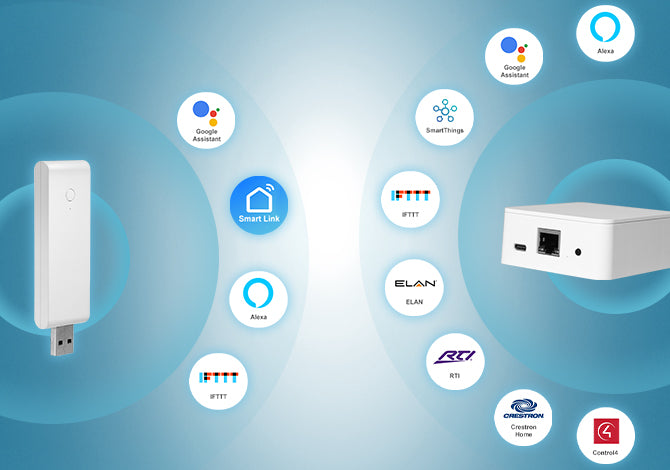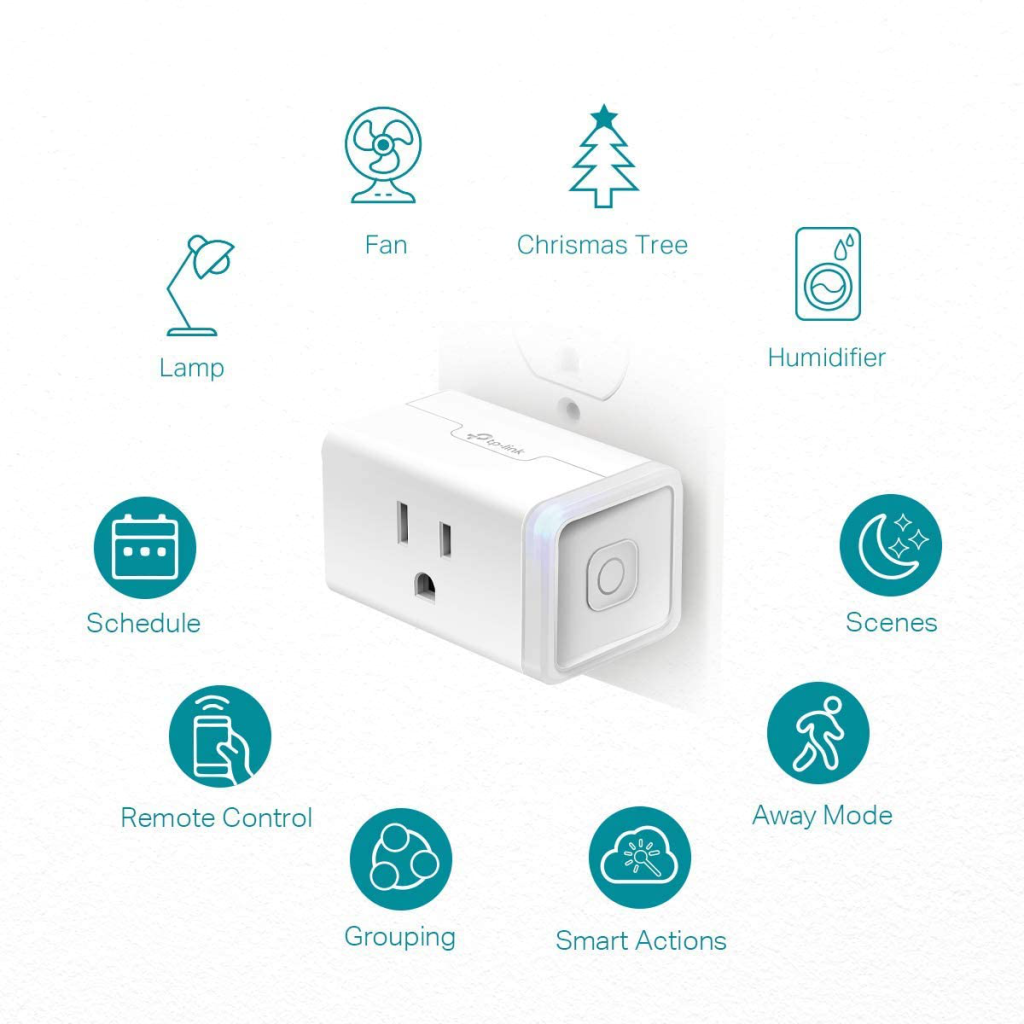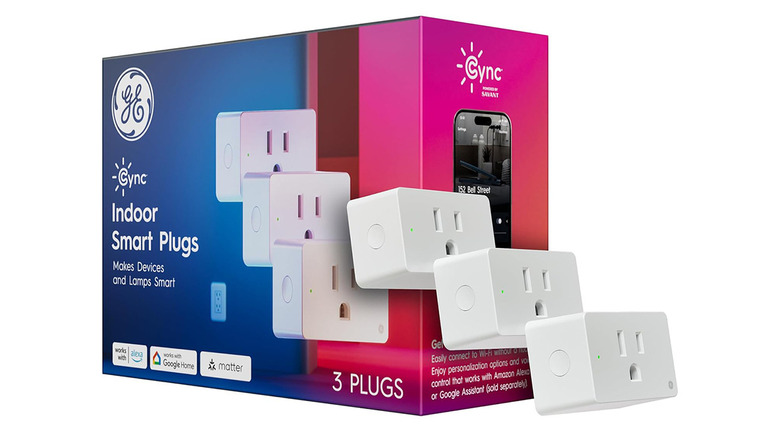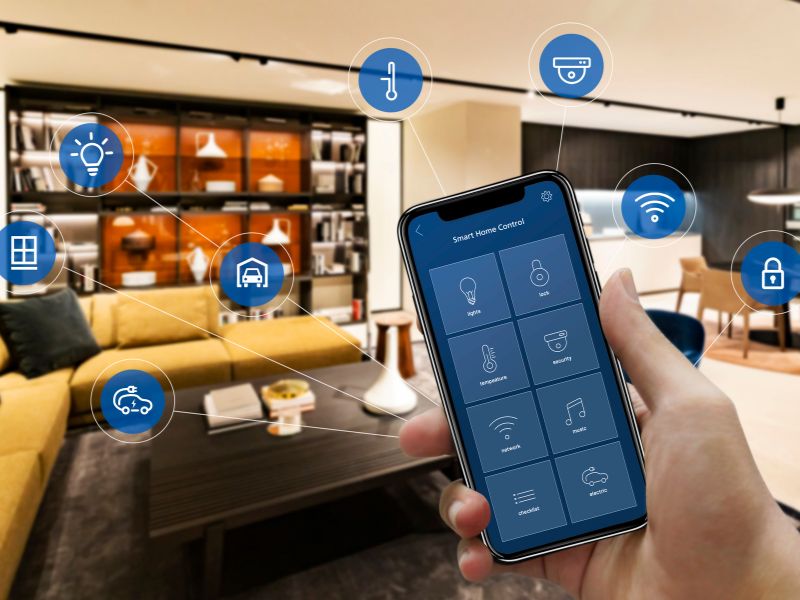Connect Smart Devices Without a Hub – Unlocking the Power of Seamless Home Automation
In an era where convenience and efficiency have become paramount, the ability to connect smart devices without a hub is transforming how we approach home automation. This new wave of technology allows users to skip traditional central controllers in favor of direct connections, streamlining systems for greater control and ease of use. Introduction: The Rise…
In an era where convenience and efficiency have become paramount, the ability to connect smart devices without a hub is transforming how we approach home automation. This new wave of technology allows users to skip traditional central controllers in favor of direct connections, streamlining systems for greater control and ease of use.
Introduction: The Rise of Hubless Smart Homes
The concept of smart homes has gained immense popularity over the past decade, revolutionizing the way we interact with our living spaces. Traditionally, many smart devices required a hub—a central unit to facilitate communication between various gadgets. However, advancements in technology have given rise to hubless systems that allow devices to communicate directly with one another.
This shift towards hubless smart homes reflects a growing desire for simplicity and flexibility. Consumers are increasingly looking for solutions that not only save time but also reduce complexity in their day-to-day lives. As more manufacturers embrace this trend, understanding how to effectively connect smart devices without a hub becomes essential for homeowners seeking to enhance their environments effortlessly.
Hubless technology liberates consumers from the need for intermediary devices, allowing for faster response times and improved reliability. In this article, we will delve into the inner workings of hubless technology, explore its benefits, examine the protocols that enable these connections, and provide guidance on setting up your very own hubless smart home.
Understanding Hubless Technology: How It Works

To fully grasp the implications of connecting smart devices without a hub, it’s important to understand the underlying technologies that make this possible.
Hubless technology relies primarily on two key protocols: Wi-Fi Direct and Bluetooth Mesh. These methods facilitate connections that do not require a central hub, resulting in streamlined communication between devices.
What is Wi-Fi Direct?
Wi-Fi Direct allows devices to form a peer-to-peer connection without needing to connect to a wireless router or access point. This technology enables them to communicate directly with each other, offering significant advantages in terms of speed and efficiency.
Wi-Fi Direct supports high-bandwidth applications and provides the capability to connect multiple devices simultaneously. For example, you can easily link your smart television to your smartphone for screen mirroring without any intermediary hardware.
Moreover, Wi-Fi Direct’s range typically extends further than standard Bluetooth connections, making it ideal for larger homes or spaces with varying layouts.
The Role of Bluetooth Mesh
While Wi-Fi Direct excels in speed and range, Bluetooth Mesh takes connectivity a step further by enabling many devices to communicate across a vast network. Bluetooth Mesh creates a decentralized network where every device acts as a node, extending coverage and improving the reliability of connections.
This means that a single device can relay information to others even if they’re not within the immediate range—perfect for sprawling properties or multi-story homes.
For instance, imagine having light bulbs in different rooms that all work together seamlessly through Bluetooth Mesh, turning off when you leave the house, no matter where those bulbs are located.
Comparing Hub-Based and Hubless Systems
Understanding the differences between traditional hub-based systems and hubless systems is crucial for evaluating which approach is best for your smart home.
| Feature | Hub-Based Systems | Hubless Systems |
|---|---|---|
| Dependency on Central Hub | Yes | No |
| Communication Speed | Slower due to hub processing | Faster due to direct connections |
| Scalability | Limited by hub capacity | Highly scalable with mesh networks |
| Complexity | More complex setup | Simplified setup |
| Reliability | Prone to single point of failure | Less reliant; devices are interlinked |
With the benefits detailed above, it becomes evident why many consumers are migrating toward hubless technology. Understanding these fundamental concepts sets the stage for maximizing your smart home’s potential.
Benefits of Connecting Smart Devices Directly

Directly connecting smart devices offers numerous advantages over traditional systems reliant on a hub. From increased speed to enhanced security, the benefits of going hubless are compelling.
Enhanced Speed and Performance
One of the standout benefits of connecting smart devices without a hub is speed. When devices communicate directly, they can do so almost instantaneously. This means quicker responses to commands, such as adjusting thermostat settings or turning on lights.
A hub-based system processes commands through a central unit, potentially introducing delays. Conversely, with direct connections, data transmission occurs without intermediaries, leading to real-time responsiveness.
Greater Flexibility and Customization
Hubless systems empower users to design their smart home according to personal preferences. Without the constraints of a hub, homeowners can easily mix and match devices from different manufacturers, customizing their environment to fit their lifestyle.
This flexibility fosters innovation, allowing users to experiment with products that suit their specific needs without worrying about compatibility issues with a central controller. Whether you choose energy-efficient smart bulbs or high-tech security cameras, the choice is yours.
Improved Scalability
As you continue to expand your smart home, scalability becomes a critical consideration. Hubless technology supports seamless integration of new devices without requiring additional hubs or extensive reconfiguration.
This means that you can continuously add devices as technology advances or as your needs change without worrying about overwhelming a central hub.
Imagine starting with a few smart speakers and gradually expanding to include security cameras, temperature sensors, and light controls—all operating smoothly together without the constraints of a central unit.
Boosted Security
Security remains a top concern for smart home users, especially with many systems being vulnerable to hacking through centralized hubs. By connecting devices directly, you mitigate some risks associated with a single point of failure.
Furthermore, the protocols used in hubless connectivity, such as Wi-Fi Direct and Bluetooth Mesh, come equipped with advanced encryption methods, ensuring that your data remains secure during transmission.
Cost-Effectiveness
While some consumers may initially view hubs as necessary investments, moving to a hubless system can save money in the long run. Without the need for purchasing separate hubs, users can allocate funds toward more essential devices or features.
Additionally, fewer components mean reduced maintenance costs and the potential for lower energy consumption, as directly connected devices often operate more efficiently than those reliant on a central controller.
In light of these benefits, it is becoming increasingly clear why the option to connect smart devices without a hub is gaining traction among tech-savvy homeowners.
Wi-Fi Direct: A Key Protocol for Hubless Connections

Wi-Fi Direct stands out as one of the primary protocols that enable devices to connect without the need for a hub. With its unique capabilities, it plays a pivotal role in facilitating fast and reliable communication between smart devices.
Basics of Wi-Fi Direct
Wi-Fi Direct allows devices to connect directly via Wi-Fi without the intermediary step of connecting to a traditional wireless access point. This protocol simplifies the process of establishing a connection, allowing devices to discover each other automatically.
Once connected, devices can exchange data at speeds comparable to what you’d experience when connected to a traditional Wi-Fi network. This is particularly beneficial for tasks like streaming high-definition video or transferring large files.
Use Cases for Wi-Fi Direct in Smart Homes
The versatility of Wi-Fi Direct makes it applicable across a wide range of smart home scenarios. Some examples include:
- Smart TVs: Easily mirror your smartphone’s display to smart TVs using Wi-Fi Direct, providing a seamless viewing experience.
- Speakers: Stream music directly from your mobile device to wireless speakers without needing to route it through a central hub, ensuring high-quality sound with minimal lag.
- Home Automation Devices: Control devices such as smart locks and light switches directly from your smartphone, enhancing convenience and speed.
The possibilities with Wi-Fi Direct are virtually endless and cater to various smart home needs.
Setting Up Wi-Fi Direct Devices
Setting up devices with Wi-Fi Direct is generally straightforward. Most modern devices come equipped with built-in Wi-Fi Direct functionality. Here’s how you might typically set it up:
- Enable Wi-Fi Direct: Go to the settings menu on both devices—ensure Wi-Fi Direct is turned on.
- Initiate Connection: One device will scan for available Wi-Fi Direct devices. Select the target device from the list presented.
- Confirm Connection: Both devices may prompt for confirmation—a simple click will establish the connection.
- Enjoy Direct Communication: Once confirmed, you can start transmitting data immediately.
As you can see, Wi-Fi Direct is not just a convenience; it represents a shift toward a more agile and responsive method of connecting smart devices.
Bluetooth Mesh: Expanding the Reach of Hubless Control

Bluetooth Mesh is another fundamental technology that enhances the capabilities of hubless smart homes. This innovative protocol addresses some of the limitations faced in traditional Bluetooth communications.
Overview of Bluetooth Mesh
Bluetooth Mesh allows devices to communicate with one another across a vast network rather than relying solely on point-to-point connections. This means that even devices well outside of each other’s immediate range can still relay messages, expanding the effective reach of a smart home system.
By creating a mesh network, individual devices act as repeaters, passing information along until it reaches its destination. This decentralized architecture provides significant advantages in terms of reliability and coverage.
Advantages of Bluetooth Mesh in Smart Homes
Implementing Bluetooth Mesh within smart home environments provides several key benefits:
- Extended Range: Unlike traditional Bluetooth, which has a limited range, Bluetooth Mesh can cover larger areas, making it perfect for multi-story homes or extensive outdoor spaces.
- Improved Reliability: The distributed nature of Bluetooth Mesh enhances communication reliability. If one device fails, others can still relay information, reducing points of failure within the network.
- Low Energy Consumption: Bluetooth Mesh is designed for low power consumption, allowing battery-operated devices to maintain prolonged lifetimes. This helps minimize the hassle of frequent battery replacements.
Practical Applications of Bluetooth Mesh
There are numerous practical applications for Bluetooth Mesh in everyday smart homes:
- Lighting Control: Imagine controlling all the lights in your home from a single app, regardless of whether they’re located in different parts of the house. Bluetooth Mesh ensures seamless coordination across multiple lighting setups.
- Sensors: Utilize interconnected sensors that can communicate data back to a central application, all while spreading the signal across your home. This is valuable for monitoring temperature, humidity, or motion in various rooms.
- Smart Locks: In multi-user scenarios, Bluetooth Mesh allows multiple users to unlock doors remotely without being physically close to the lock itself, enhancing convenience and safety.
Through the strength of both Wi-Fi Direct and Bluetooth Mesh, the future of hubless smart homes is becoming increasingly robust, allowing users unparalleled freedom and control over their environments.
Security Considerations for Direct Smart Device Connections
As more consumers turn to hubless technology, understanding the security implications of connecting smart devices directly is paramount. While there are clear advantages, direct connectivity brings unique challenges that must be addressed.
Potential Vulnerabilities
One of the primary concerns with direct connections is the increased risk of unauthorized access to devices. When devices communicate without a central hub, there may be fewer barriers against potential hackers.
For example, if a smart camera connects directly to a user’s phone, attackers could potentially intercept that connection if proper security measures aren’t utilized.
Mitigating Security Risks
To safeguard your hubless smart home, consider implementing the following best practices:
- Use Strong Passwords: Ensure that all devices have strong, unique passwords to prevent unauthorized access. Avoid common phrases or easy-to-guess combinations.
- Regular Firmware Updates: Many manufacturers release firmware updates to address security vulnerabilities. Regularly check for updates and install them promptly.
- Network Segmentation: Create separate networks for your smart devices, isolating them from your primary home network. This adds an additional layer of protection should any device become compromised.
- Monitor Device Activity: Keep an eye on device activity through your smart home application. Unusual behavior may indicate that a device has been hacked or compromised.
By adopting these strategies, you can significantly reduce the likelihood of falling victim to cyber threats in a hubless environment.
Leveraging Encryption
Both Wi-Fi Direct and Bluetooth Mesh utilize encryption protocols that enhance the security of transmitted data. Through encryption, sensitive information is scrambled, preventing eavesdropping and ensuring privacy during device communication.
Using devices that support advanced encryption standards solidifies the security of your smart home ecosystem. Always refer to the manufacturer’s specifications to confirm that appropriate encryption measures are in place.
Compatible Smart Devices: Identifying Hubless Options
With the rapid growth of the hubless smart home market, identifying which devices can operate independently is crucial for building an effective system. Various brands and product lines now prioritize hubless connectivity, making it easier for consumers to find compatible options.
Popular Hubless Smart Devices
Several popular smart devices currently offer direct connection capabilities without requiring a central hub. Here’s a look at some categories and examples:
- Smart Speakers: Brands like Sonos and Amazon Echo Dot support Wi-Fi Direct and can connect directly to your smartphone or other devices for seamless audio streaming.
- Smart Lighting: Philips Hue offers bulbs that can function through Bluetooth Mesh, allowing users to control them directly via their smartphones without a hub.
- Smart Locks: August Smart Lock Pro can connect directly through Wi-Fi and Bluetooth, enabling you to manage access without the need for extra devices.
- Thermostats: Ecobee thermostats can be controlled directly through the app, allowing users to adjust heating and cooling settings without requiring a hub.
Evaluating Compatibility
When exploring hubless options, always ensure that devices explicitly mention compatibility with either Wi-Fi Direct or Bluetooth Mesh. Refer to product documentation, user reviews, or manufacturer websites to verify their capabilities.
Consideration should also be given to the overall interoperability of devices from different manufacturers. While hubless technology promotes flexibility, it’s essential to confirm that selected devices can communicate effectively with one another.
Future-Proofing Your Smart Home
As technology continues to evolve rapidly, future-proofing your smart home investment is vital. Look for devices that offer firmware updates and ongoing support to ensure they remain relevant and functional as new protocols emerge.
Investing in well-known brands with a reputation for innovation can go a long way toward securing a reliable hubless smart home ecosystem.
Transitioning to a hubless smart home requires thoughtful planning and decision-making, ensuring that selected devices align with your goals for convenience, security, and performance.
Setting Up a Hubless Smart Home: A Step-by-Step Guide
Creating a hubless smart home may seem daunting, but with the right approach, it can be an enjoyable and fulfilling project. Follow this guide to simplify the process, ensuring a smooth transition to a more connected lifestyle.
Define Your Objectives
Before diving headfirst into setting up a hubless smart home, take time to outline your objectives.
- What aspects of your daily life would you like to automate?
- Are you looking for enhanced energy efficiency, security, or simply convenience?
- How much budget do you plan to allocate for devices?
Defining these objectives will help you select the right devices and create a cohesive system that meets your needs.
Research Compatible Devices
Arming yourself with knowledge about compatible hubless smart devices is essential. Browse through various brands, reading reviews and comparisons to identify options that suit your preferences.
Look for devices that utilize either Wi-Fi Direct or Bluetooth Mesh for maximum compatibility. Some good resources include online forums, tech blogs, and manufacturer websites to help you gather insights.
Start with a Base Layer
Once you’ve identified the devices you wish to incorporate, begin with a base layer of essential devices.
Consider starting with:
- Smart lighting solutions.
- A smart speaker for voice control.
- A smart thermostat for temperature management.
Starting with a few core devices allows you to familiarize yourself with the connectivity and operation before expanding further.
Connect and Configure Your Devices
Follow the manufacturer’s instructions for each device to establish connections:
- Enable Connectivity Features: Make sure Wi-Fi Direct or Bluetooth Mesh is activated on your devices.
- Pair Devices: Use your smartphone or smart assistant app to discover and pair devices. Confirm connections as prompted.
- Configure Settings: Adjust settings based on personal preferences, such as scheduling lights or setting temperature ranges.
Test Your Setup
Once everything is connected and configured, conduct tests to ensure all devices are communicating as intended.
- Try issuing voice commands through your smart speaker.
- Check remote access to smart lighting from your smartphone.
- Monitor thermostat adjustments to ensure accuracy.
Conducting thorough tests helps identify any issues early and ensures a seamless experience moving forward.
Expand Gradually
With your initial setup complete, consider expanding your hubless smart home gradually. Incorporate additional devices, leveraging their compatibility with existing components.
Explore new innovations that may enhance your lifestyle, whether through added convenience, efficiency, or security.
Remember that patience is key during this process. Familiarizing yourself with new technology may take time, but the rewards will be worth it.
Troubleshooting Common Hubless Connectivity Issues
Even the most advanced technology can encounter challenges from time to time. Understanding common connectivity issues and how to resolve them can help you keep your hubless smart home running smoothly.
Recognizing Connectivity Problems
Identifying the signs of connectivity issues is the first step toward troubleshooting. Common symptoms include:
- Devices Fail to Respond: If a smart device does not respond to commands, check connectivity status.
- Unstable Connections: Frequent disconnections or inconsistency in performance can indicate problems in the network.
- Delays in Response Time: If there is a noticeable lag when sending commands, it may be due to interference or poor signal quality.
Addressing these issues proactively can help you maintain a reliable hubless smart home.
Troubleshooting Steps
If you encounter issues with your hubless setup, consider the following steps:
- Restart Devices: Sometimes, restarting the affected devices can resolve temporary connection hiccups.
- Check Signal Strength: Ensure that devices are within range of each other, especially for Bluetooth connections. Walls and obstructions can weaken signals.
- Update Firmware: Outdated firmware can contribute to connectivity problems. Check for updates and install them to enhance performance.
- Reset Network Settings: If problems persist, you may want to reset network settings on the devices to clear any configuration errors.
- Consult Manufacturer Resources: Often, manufacturers provide troubleshooting guides or FAQs on their websites. Utilize these resources to assist in resolving specific issues.
Seeking Professional Help
If all else fails, don’t hesitate to seek assistance from professionals or tech-savvy friends who can offer insight. They may spot issues that are easy to overlook.
Additionally, connecting with community forums or customer support for specific devices can lead to valuable information or solutions.
The Future of Smart Homes: Hubless Technology and Beyond
As we look ahead, the trajectory of smart home technology is poised for exciting developments. Hubless technology offers a glimpse into a future where seamless connections redefine how we interact with our environments.

Emerging Trends in Hubless Technology
Anticipate the rise of new protocols and standards that will drive further advancements in hubless connectivity. Innovations in artificial intelligence, machine learning, and IoT (Internet of Things) will continue to enhance the capabilities and functionalities of smart devices.
Expect to see:
- Greater Interoperability: As more manufacturers adopt open standards, devices will become even more compatible with one another, fostering a more unified smart home ecosystem.
- Enhanced User Experience: Expect smarter devices that learn from user behaviors and preferences, adapting to optimize convenience and efficiency.
- Sustainability Initiatives: As environmental awareness grows, manufacturers will likely focus on producing energy-efficient devices that minimize carbon footprints.
Consumer Empowerment
Hubless technology empowers consumers to take charge of their smart home experiences. No longer bound by the limitations of central hubs, homeowners can curate personalized environments that reflect their lifestyles.
The ability to easily integrate diverse devices fosters creativity and innovation, encouraging individuals to explore new functionalities and designs.
Conclusion
In conclusion, the move towards connecting smart devices without a hub signifies a transformative shift in home automation. With the adoption of protocols like Wi-Fi Direct and Bluetooth Mesh, consumers can enjoy increased speed, flexibility, security, and cost-effectiveness. The ability to set up a hubless smart home equips users with the tools to create personalized experiences tailored to their lifestyles. As technology continues to evolve, embracing hubless connections will undoubtedly shape the future of smart homes, empowering individuals to redefine their interactions with their living spaces.




